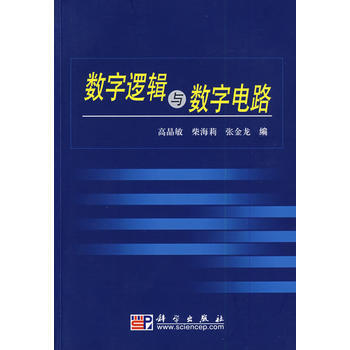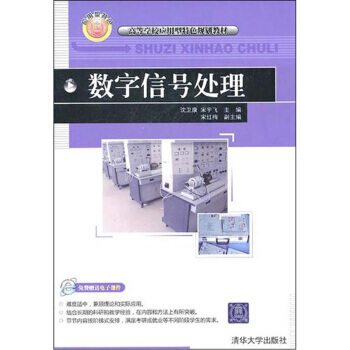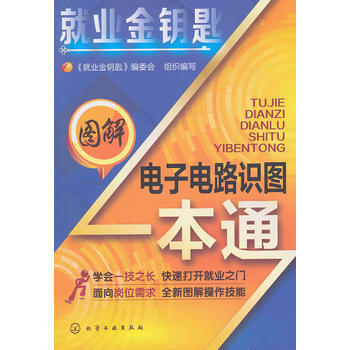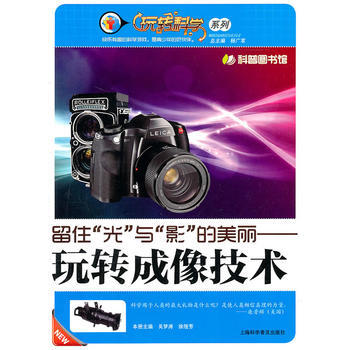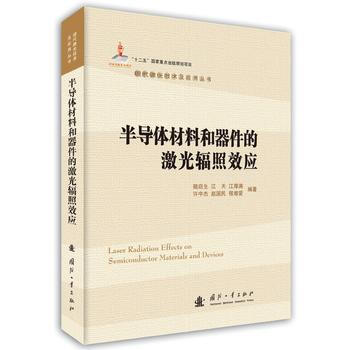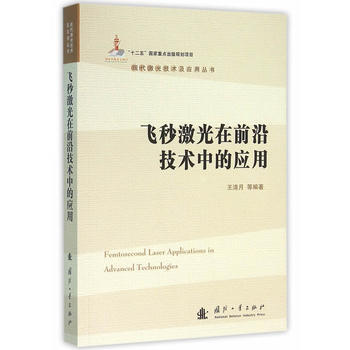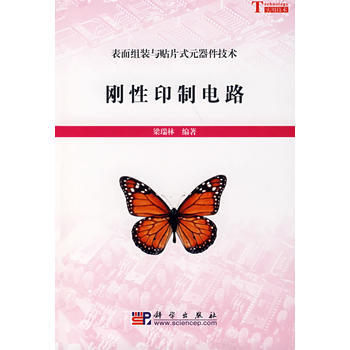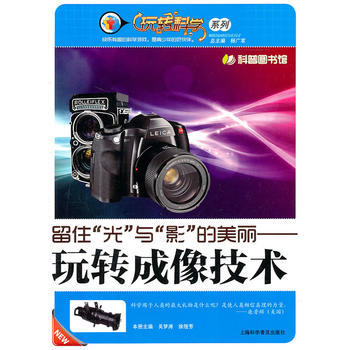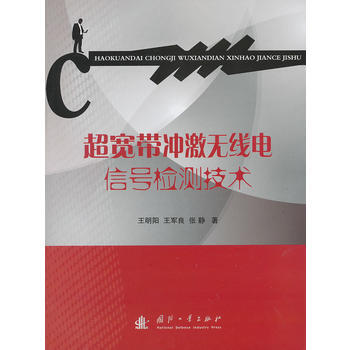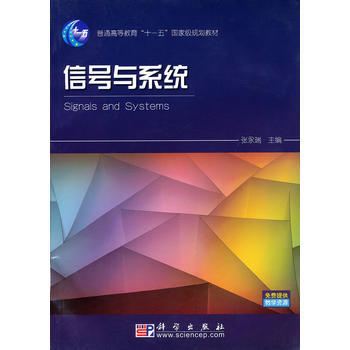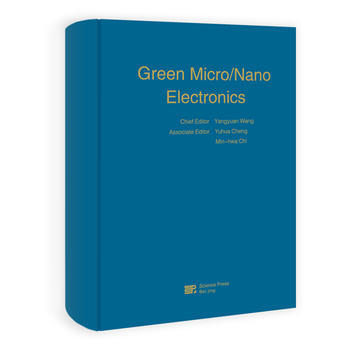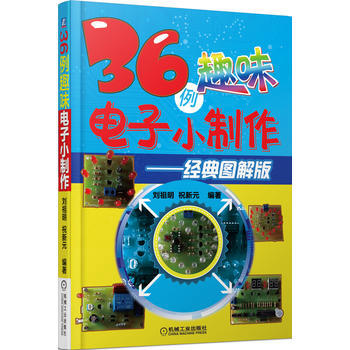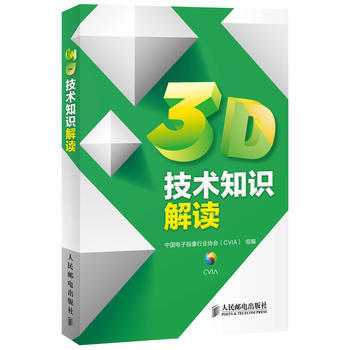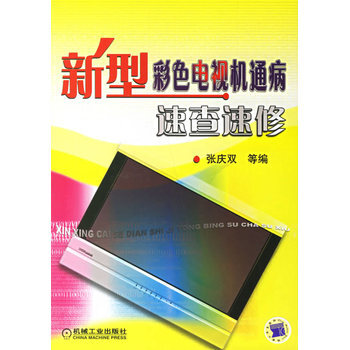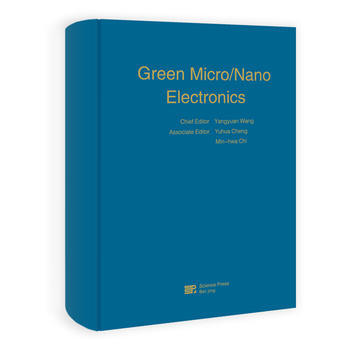
Green Micro/Nano Electronics pdf epub mobi txt 电子书 下载 2025
- Microelectronics
- Nanoelectronics
- Green Electronics
- Sustainable Technology
- Low Power Design
- Emerging Technologies
- Materials Science
- Device Physics
- Energy Efficiency
- Environmental Impact

具体描述
基本信息
书名:Green Micro/Nano Electronics
定价:218.00元
售价:148.2元,便宜69.8元,折扣67
作者:Yangyuan Wang、Yuhua Cheng、Min-hwa Chi
出版社:科学出版社
出版日期:2013-05-01
ISBN:9787030363312
字数:
页码:
版次:1
装帧:精装
开本:16开
商品重量:1.562kg
编辑推荐
《绿色微纳电子学(Green Micro\NanoElectronics)》首先提出了“绿色微纳电子学”的概念,并分别从能源经济、社会文化、低功耗集成电路设计、绿色集成电路芯片制造、绿色电子封装、微纳电子新器件结构、绿色存储器的发展和集成微纳系统(M/NEMS)等各个角度对绿色微纳电子学进行了阐述,介绍了在这些方面国内外学术界和工业界的**进展;此外,王阳元还从新能源的应用角度,对半导体绿色照明光源、薄膜太阳能电池等有关领域的发展进行了学术探讨。本书是全英文版。
内容提要
提出“绿色微纳电子学”的概念,分别从能源经济、社会文化、低功耗集成电路设计、绿色集成电路芯片制造、绿色电子封装、微纳电子新器件结构、绿色存储器的发展和集成微纳系统等各个角度对绿色微纳电子学进行阐述,介绍这些方面国内外学术界和工业界的*进展;此外,还从新能源的应用角度,对半导体绿色照明光源、薄膜太阳能电池等有关领域的发展进行了学术探讨。
目录
Chapter 1 Energy Resources and Their Roles in Economic and Social Development
1.1 Energy Generation and Reserves
1.1.1 Classifications of Energy Resources
1.1.2 Reserves of Conventional Energy
1.1.3 Reserves of New Energy
1.2 Use and Consumption of Energy
1.2.1 Use and Production of Energy
1.2.2 Energy Consumption in Life and Production
1.3 Energy and Economic Development
1.3.1 Energy as an Important Factor in Pushing Economic Growth
1.3.2 The Negative Impact of Energy Crisis on Economic Growth
1.3.3 Constraint of Population Growth on Energy Development
1.3.4 Constraints of Environmental Pollution on Energy Development
1.4 Policy Guidance and Measures of Saving Energy
1.4.1 Regulations for Environmental Protection
1.4.2 Tax Policy
1.4.3 Major Planning
1.4.4 Important Measures
1.5 Future Development of Integrated Circuits(IC)
1.5.1 Revolutionary Role of IC in Energy Conservation
1.5.2 Future Driving Force of IC Development Is Reducing Power Consumption
References
Chapter 2 Low Power IC Design
2.1 Power Source and Analysis of Integrated Circuits
2.1.1 Static Power
2.1.2 Dynamic Power
2.1.3 Power Analysis
2.1.4 Conclusion
2.2 Circuit-Level Low Power Design
2.2.1 Introduction
2.2.2 RTL-level Low Power Design
2.2.3 Gate-level Low Power Design
2.2.4 Layout-level Low Power Design
2.2.5 Asynchronous Circuit Design
2.2.6 Sub-threshold and Multi-voltage Design
2.2.7 Conclusions
2.3 System-level Low Power Design
2.3.1 Introduction
2.3.2 Dynamic Power Management
2.3.3 Dynamic Voltage Scaling
2.3.4 Low Power Compilation
2.3.5 Low Power Hardware/Software Co-design
2.4 Battery-Aware Low Power Design
2.4.1 Introduction
2.4.2 Battery Model and Battery Discharge Characteristics
2.4.3 Battery-Aware Task Scheduling
2.4.4 Battery-Driven Power Management
2.4.5 Conclusion
2.5 Low Power IC Design and Green IT
2.5.1 Rise of Green IT
2.5.2 Low Power IC Design for Green IT
2.5.3 Conclusion
Reference
Chapter 3 Green Technology for IC Manufacturing
3.1 IC Industry and Environment
3.2 IC manufacturing process introduction
3.3 Modern CMOS Process Flow
3.4 Dry Etching/Cleaning and Greenhouse Gas Emissions
3.4.1 Introduction of Dry Etching
3.4.2 Introduction of Dry Cleaning Process
3.4.3 Process Parameter Optimization
3.4.4 Technology of Exhaust Treatment for Dry and Wet Process
3.5 Wet Etching/Cleaning and Waste Chemicals
3.5.1 Wet Etching
3.5.2 Wet Cleaning in FEOL and BEOL
3.6 Photo-resist Pollution and Control in Lithography Processes
3.6.1 Introduction of Lithography Process and Photo-resist
3.6.2 Background Information on PFOS
3.6.3 Environmental and Health Impacts of Photo-resist
3.6.4 The Importance of PFOS for Lithography Processes
3.6.5 Environmental Friendly Photo-resist Materials
3.6.6 The R & D Trend for Environmental Friendly Photo-resists
3.7 Slurries in CMP and Environmental Considerations
3.7.1 Introduction of CMP Technology
3.7.2 Assessment of Environmental Impact of CMP Slurries
3.7.3 Classification and Characteristics of CMP Slurries
3.7.4 Slurry Disposal
3.7.5 Slurry Storage and Transportation
3.8 IC Manufacturing and Treatment of Waste Chemicals
3.8.1 Common Chemicals in IC Manufacturing
3.8.2 Liquid Chemicals and Waste Water Treatment
3.8.3 Gaseous Chemicals and Exhaust Treatment
3.8.4 Management of Hazardous Substances in IC Manufacturing
3.9 Low Power CMOS Technology for Friendly Environment
3.9.1 CMOS on SOI Technology
3.9.2 High-κ and Metal-gate(HKMG)Technology
3.9.3 Low-κ Interconnection
3.9.4 System-on-chip and System-in-package
3.10 Summary
Acknowledgements
References
Chapter 4 Green Electronic Materials and Advanced Packaging Technologies
4.1 Introduction
4.1.1 Background Information
4.1.2 The Importance of Lead-free Soldering in Green Electronics
4.2 IC Chip Packaging
4.2.1 Packaging Process
4.2.2 Classification of Packages
4.2.3 New Packaging Technologies
4.3 Co-design of Chip-Package-PCB
4.3.1 Challenges of Advanced Packaging
4.3.2 Chip-Package-PCB Co-design Process
4.3.3 Key Issues of Chip-Package-PCB Co-design
4.4 System-in-Package(SIP)and its Applications
4.4.1 Overview
4.4.2 Key Issues of SIP
4.4.3 Applications of SIP
4.5 Three-dimensional Packaging
4.5.1 Overview
4.5.2 Basics of Three-dimensional Packaging
4.5.3 Challenges of Three-dimensional Packaging Technology
4.5.4 Research and Applications of Three-dimensional Packaging
4.5.5 Summary and Development Trends
4.6 Applications of Green Nanoposites in Advanced Packaging
4.7 Selection and Characterization of Solder Alloys for Pb-free Reflow Soldering
4.7.1 Pb-free Solder Paste Materials
4.7.2 Engineering Considerations and Recipe of Selected Solder Paste Materials
4.7.3 Flux
4.7.4 Characterization of Selected Solder Paste Materials
4.8 Board Level Reliability Test
4.8.1 Sample Description
4.8.2 Solder and Intermetallic Analysis after Reflow
4.8.3 Accelerated Thermal Cycling Test(ATC)
4.8.4 Package Shear/Pull Tests
4.8.5 Four-point Bending Test
4.8.6 Drop Test
4.9 Conclusions
References
Chapter 5 New Device Technologies for Green Micro/Nano Electronics
5.1 Overview
5.2 Dynamic Threshold Voltage Device and Adaptive Substrate Bias Technique
5.2.1 Dynamic Threshold Voltage MOS(DTMOS)Device with Gate-Body Connected
5.2.2 Adaptive Substrate Bias Technique for Low Voltage Circuits
5.3 Nanoscale New-structual MOSFETs with Low Leakage Current
5.3.1 Ultra-Thin Body SOI and Quasi-SOI Device
5.3.2 Novel Double-Gate MOS Device
5.3.3 Gate-All-Around Silicon Nanowire MOS Device
5.4 Novel-Mechanism Based Low Power Devices with Ultra-Steep Subthreshold Slope
5.4.1 Tunneling Field Effect Transistor
5.4.2 Impact Ionization MOS Device
5.4.3 Suspended-Gate MOSFET and NEM Relay
Acknowledgements
References
Chapter 6 Nanoelectronics from the Bottom-up:Materials,Devices and Circuits
6.1 Introduction
6.2 Carbon nanotube-based Nanoelectronics
6.2.1 Geometry and Electronic Structure
6.2.2 Synthesis of Aligned Carbon Nanotubes
6.2.3 Nanoelectronic Devices
6.2.4 Carbon Nanotube-based Circuits
6.3 Graphene-based Nanoelectronics
6.3.1 Synthesis and Transfer of Graphene
6.3.2 Electronic Structures and Properties of Graphene
6.3.3 Graphene-based Nanoelectronic Devices
6.4 Molecular Electronics
6.4.1 Brief History of Molecular Electronics
6.4.2 Molecular Electronic Devices
6.4.3 Molecular Electronic Circuits
6.5 Atomic Scale Devices
6.5.1 Single-Atom Transistor
6.5.2 Atomic Switch
6.5.3 Applications of Atomic Scale Devices
6.6 Summary
Acknowledgements
References
Chapter 7 Green Memory Technology
7.1 Overview of Semiconductor Memory Technologies
7.1.1 State-of-art Memory Technologies Toward Scaling Limit
7.1.2 Emerging Semiconductor Memory Technologies
7.2 Resistive Random Access Memory(RRAM)
7.2.1 Principle and Mechanisms
7.2.2 RRAM Characteristics
7.2.3 RRAM Technology
7.3 Phase-change Random Access Memory(PCRAM)
7.4 Magic Random Access Memory(MRAM)
7.5 Summary
Acknowledgements
References
Chapter 8 Microelectromechanical/Nanoelectrome chanical Systems and Their Applications
8.1 Background of MEMS
8.1.1 Definition of MEMS
8.1.2 Features of MEMS
8.1.3 Nanoelectromechanical System
8.1.4 Influence and State of MEMS/NEMS
8.2 Silicon-based Micromachining
8.2.1 Surface Micromachining Technology
8.2.2 Bulk Micromachining
8.3 Nanomachining Technology
8.3.1 Nano Lithography Technology
8.3.2 Nanoimprint Lithography
8.3.3 Spacer Technology
8.3.4 Fabrication of Nano-forests Based on Oxygen Plasma Removal of Photoresist
8.3.5 Nanosphere Self-assembly and Etching Technology
8.4 Categories and Applications of MEMS
8.4.1 Micromechanical Sensors
8.4.2 Optical MEMS
8.4.3 Microfluidics
8.4.4 Micro/Nano Bio-sensors/Bio-chips/BioMEMS
8.4.5 Applications of Micro/Nano Technology in System
8.5 RF MEMS
8.5.1 MEMS Switch/Relay
8.5.2 MEMS Inductors
8.5.3 Tunable Capacitors
8.5.4 Micromechanical Resonators and Filters
8.6 Power MEMS
8.6.1 Power Generator
8.6.2 Micro Energy Harvesting System
8.6.3 Mechanical Vibration
8.7 Environmental MEMS
8.7.1 Atmospheric Environmental Monitoring
8.7.2 Water Environmental Monitoring
8.7.3 Environmental Monitoring of Soil
8.7.4 Pathogenic Factors Monitoring
8.8 Trends and Prospects
Acknowledgements
References
Chapter 9 Photovoltaic Materials and Applications
9.1 Renewable Energy
9.1.1 PV Market and Roadmap
9.1.2 PV Materials and Applications
9.2 Principle of Solar Cell
9.2.1 PV Effect
9.2.2 J-V Characteristics
9.2.3 Quantum Efficiency
9.2.4 J-V Setup
9.2.5 QE Setup
9.3 Si Wafer PV Technology
9.3.1 Si Wafer
9.3.2 c-Si and Mc-Si Solar Cells
9.4 High Efficiency III-V
9.4.1 Concentrated Solar Cells
9.4.2 Multi-junction Solar Cells
9.5 Thin-film PV Technologies
9.5.1 TCO Material
9.5.2 A-Si & Nc-Si
9.5.3 CdTe
9.5.4 CIGS
9.5.5 DSSC
9.5.6 OPV
9.6 Innovative PV Technologies
9.6.1 Light Management
9.6.2 Nano-wire Solar Cell
9.6.3 Hot Carriers
9.6.4 Q-dot and Multi Exciton Generation
9.6.5 Intermediate Band Gap Solar Cell
9.7 Summary
References
Chapter 10 Solid State Lighting
10.1 An Overview of Solid State Lighting
10.1.1 Basic Concepts of Solid State Lighting
10.1.2 Basic Principles of Solid State Lighting
10.1.3 History and Current Developments of LEDs
10.2 Major Techniques of Solid State Lighting
10.2.1 Epitaxy
10.2.2 Device Fabrication
10.2.3 Packaging
10.3 LED Substrates
10.3.1 Sapphire
10.3.2 SIC
10.3.3 Si
10.3.4 GaN
10.3.5 ZnO
10.3.6 AlN
10.4 LEDs of Different Colors
10.4.1 Red LEDs
10.4.2 Green LEDs
10.4.3 Blue LEDs
10.4.4 Ultraviolet and Deep Ultraviolet LEDs
10.5 Progresses in LED Research
10.5.1 GaN Epitaxy
10.5.2 LEDs Device Morphology
10.6 OLED and PLED
10.6.1 Basic Concepts
10.6.2 Advantages of OLED/PLED
10.6.3 Applications
10.6.4 OLED/PLED Technological Advances
10.6.5 OLED/PLED Structure Evolution
10.7 Outlook
References
Chapter 11 AMOLED Displays:Pixel Circuits and Driving Schemes
11.1 Introduction
11.2 Current Driving Schemes
11.2.1 Stability and Non-uniformity in Current
11.2.2 Dynamic Effects
11.2.3 Settling Time in CPPCs
11.2.4 Techniques to Improve Programming Times in CPPCs
11.3 Voltage Driving Schemes
11.3.1 Imperfect Compensation
11.4 External Compensation
11.4.1 General Block Diagram
11.4.2 Current-parator Based System
11.5 Conclusion and Outlook
References
Chapter 12 The Impact of Social Culture and Institutions on Green Micro/Nano Electronics
12.1 Connotation of Social Culture
12.1.1 The Medium of Culture
12.1.2 Culture Is a Reflection of the Economy
12.1.3 The Interaction between Culture and the Progress of Science and Technology
12.1.4 Soft Power of Culture
12.2 Guide to the Development of Green Micro/Nano Electronics by the Scientific Concept of Development
12.2.1 People-Centered Principle
12.2.2 Harmonious Coexistence with Nature
12.2.3 Development Environment with Harmony without Uniformity
12.2.4 Legal System,Rule by Law and Morality
12.3 Development of Green Micro/Nano Electronics Needs a Green Environment
12.3.1 Development of Science Needs a Peaceful Environment
12.3.2 Development of Science Needs a Harmonious Culture
12.3.3 Uniting and Cooperating,Letting Everyone Play a Role
12.3.4 Sharing Resources,Fully Using Our Equipment
12.3.5 Respecting Intellectual Property Rights
12.3.6 Paying Attention to Cultivating Personnel
References
作者介绍
文摘
序言
用户评价
我最初购买《Green Micro/Nano Electronics》的动机是希望了解如何利用纳米技术来应对电子垃圾和能源消耗的挑战,特别是那些突破传统硅基技术瓶颈的创新方案。但阅读之后,我发现这本书对“突破”的定义非常保守。它似乎主要围绕着如何将现有的半导体制造技术在更小的尺度上做到极致,而不是探索完全不同的、可能更“绿色”的替代路径,比如基于碳纳米管的器件或者量子点电路的集成方法。书中关于器件退化机制的分析占据了相当大的篇幅,这对于可靠性研究固然重要,但这种退化分析往往建立在对现有工艺参数的微调之上,缺乏对根本性材料替代的探讨。例如,关于栅极漏电流的研究,花费了大量篇幅来解释如何通过优化界面钝化来降低缺陷态密度,却几乎没有提及是否有材料本身就具有天然的低漏电流特性,从而可以简化后续的复杂处理工艺。因此,这本书更像是一部关于如何将现有技术“榨干”其性能潜力的指南,而非一本关于颠覆性“绿色”材料与工艺创新的前沿报告,对于寻求革命性解决方案的读者来说,会感到内容上的错位。
评分说实话,拿到这本书的时候,我对“Green”这个词抱有很高的期待,以为会读到大量关于有机光伏、透明电极或者完全可降解电子器件的深度分析。结果呢?这本书的重点似乎完全偏离了“环保”的主题,而更像是对标准CMOS技术在纳米尺度下物理限制的极限探索报告。书中大段篇幅用于详述SOI(绝缘体上硅)结构中载流子迁移率的微小变化,以及高K介质栅极材料的界面态密度分析。这些内容无疑是专业且重要的,但它们与“绿色”的关联性需要读者自己去费力地构建。举个例子,作者提到使用某种稀有金属氧化物来替代传统栅极材料,仅仅因为其较低的制造温度,但完全没有对比该材料在整个生命周期中(从开采到最终处理)的环境影响。这种论述的视角过于狭隘,仿佛“绿色”只是一个修饰词,而非贯穿全书的核心设计哲学。对于希望了解如何设计出真正生态友好型电子产品的读者而言,这本书提供的“绿色视角”极其微弱,更多的是对现有技术的理论加固。
评分我花了整整一个周末的时间试图消化《Green Micro/Nano Electronics》的前三章,坦率地说,阅读体验相当具有挑战性。这本书的叙事风格极其学术化,语气冰冷而精确,完全没有试图去引导初级读者。它似乎假定读者已经对半导体器件的退火过程和晶格缺陷的控制了如指掌。书中引用的参考文献列表非常详尽,但更新速度略显滞后,许多最新的、例如原子层沉积(ALD)在柔性基底上的创新应用并未被充分收录。我特别留意了关于能源效率的讨论,但发现作者对“效率”的定义似乎完全局限于晶体管的开关速度和漏电流控制,而对整个系统层面的能耗优化关注不足。例如,在讨论新型压电材料时,作者着重于其压电系数的理论最大值,却鲜有提及如何在实际封装中克服机械应力导致的性能衰减。这种理论上的完美主义,与现实工程中的妥协和权衡之间存在着巨大的鸿沟。总而言之,这本书的价值在于其对基本物理定律的深刻阐述,但它在连接这些微观世界的严谨性与宏观世界中“绿色”电子产品的实际制造流程方面,显得力不从心,显得过于“象牙塔化”了。
评分这本书的插图和图表质量极其精良,这一点必须承认。每一个能带图、每一个晶格缺陷模型都绘制得清晰无比,充满了专业的美感。然而,正是这种对细节的过度沉迷,使得全书的阅读节奏变得非常拖沓。当你试图寻找关于下一代印刷电子技术(Printed Electronics)的讨论时,你会发现自己被困在对布歇希尔(Buchsbaum)公式的详细推导中,而且这个公式似乎与“印刷”这个主题并无直接关联。作者的写作风格非常“堆砌”,一个观点往往需要通过三到四个数学步骤才能引出,这使得非专业读者在跟进时感到筋疲力尽。我希望看到的是,如何将纳米器件的优势转化为实际的、可大规模生产的、且对环境友好的产品线,例如,如何通过优化沉积角度来提高柔性器件的弯曲寿命。遗憾的是,这些关于“制造可实现性”和“环境影响评估”的讨论,在这本侧重于“理论极限”的书籍中,被严重边缘化了。它更像是为理论物理学家准备的学术专著,而非面向工业界工程师的参考书。
评分这本《Green Micro/Nano Electronics》的封面设计简洁有力,充满了未来感,但打开书页后,我立刻意识到它并非我期待的那种关于新兴环保电子技术的入门指南。它更像是一本深入且高度专业化的教科书,专注于材料科学和半导体物理的交叉领域。作者似乎对微纳尺度的器件工作原理有着近乎痴迷的钻研,书中充斥着大量的薛定谔方程、能带结构图以及复杂的薄膜沉积技术细节。对于一个主要关注可持续发展和低功耗应用的读者来说,前几章关于量子限制效应的数学推导实在有些过于晦涩和冗长。我期望看到更多关于生物相容性材料在柔性电子中的实际应用案例,或者至少是对“绿色”标签更具操作性的解释——比如在生产过程中如何减少有毒溶剂的使用。然而,这本书似乎更侧重于基础理论的严谨性,以至于将实际应用的探讨一再推迟到全书的末尾,且篇幅寥寥。整体而言,它更适合那些正在攻读微电子学博士学位,并需要掌握器件物理极限的理论基础的研究人员,而不是对“绿色”电子制造工艺感兴趣的工程师或政策制定者。如果想了解如何用更可持续的方式制造芯片,这本书可能不是最佳选择,因为它更像是为如何将硅基器件推向物理极限而服务的“圣经”,而非关于环境友好型电子学的“行动手册”。
相关图书
本站所有内容均为互联网搜索引擎提供的公开搜索信息,本站不存储任何数据与内容,任何内容与数据均与本站无关,如有需要请联系相关搜索引擎包括但不限于百度,google,bing,sogou 等,本站所有链接都为正版商品购买链接。
© 2025 windowsfront.com All Rights Reserved. 静流书站 版权所有


